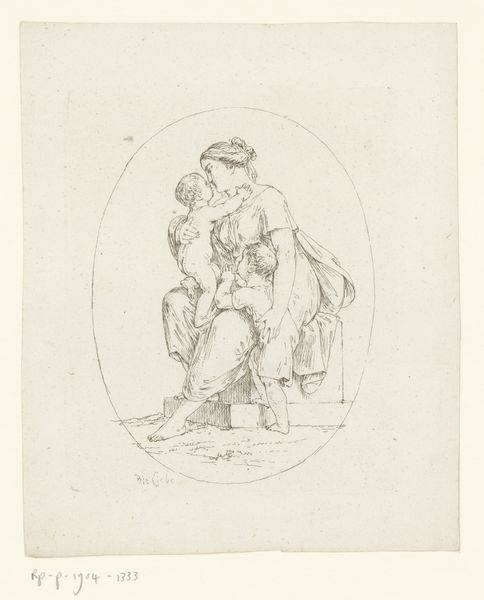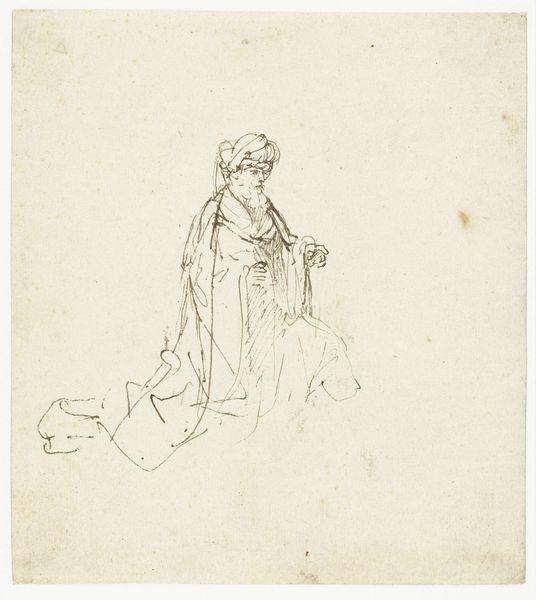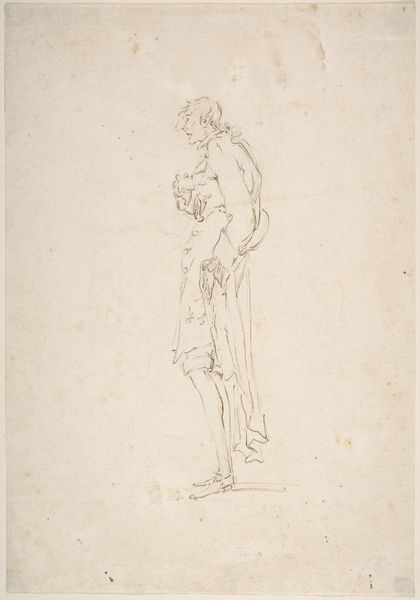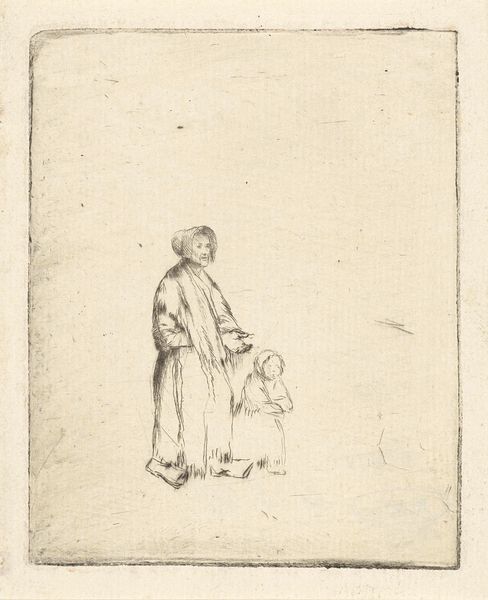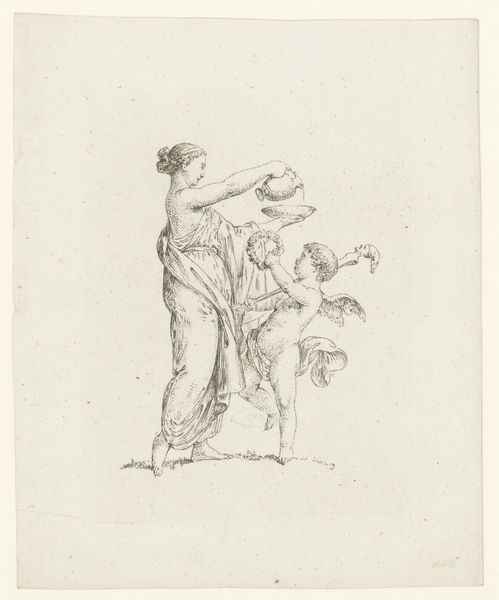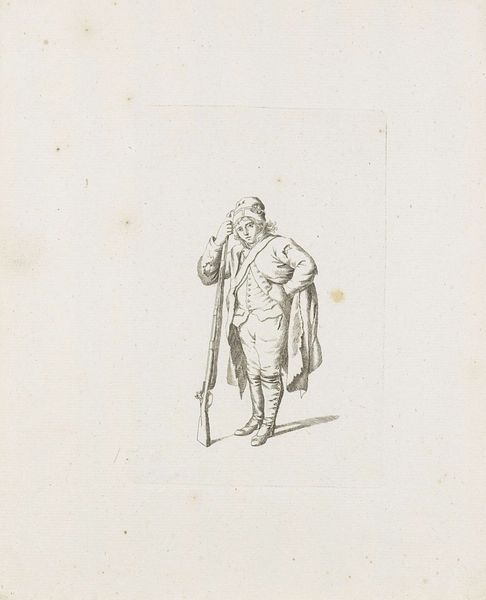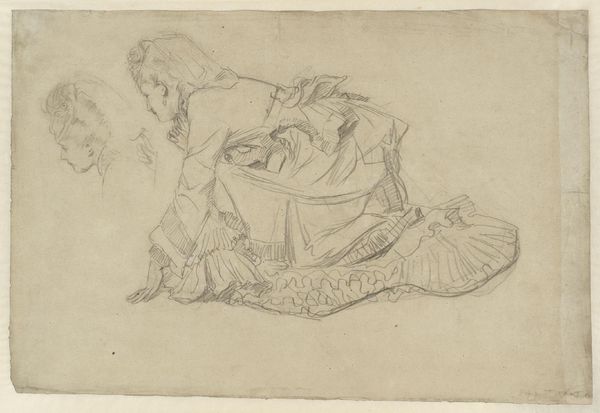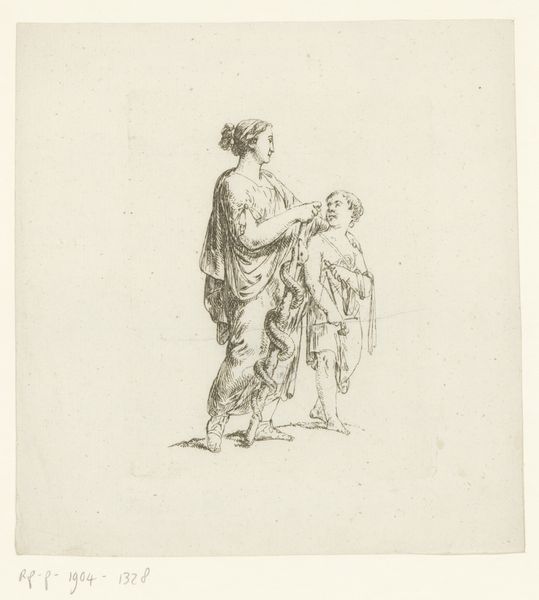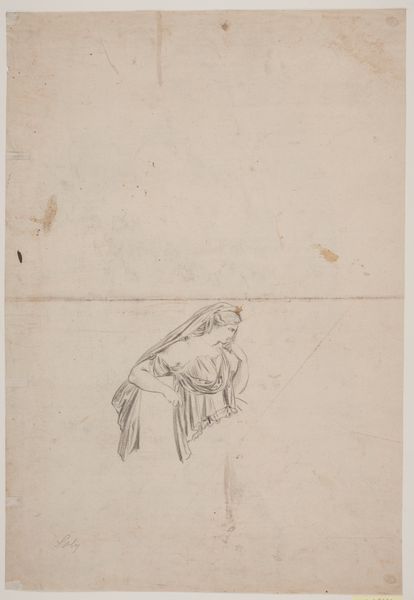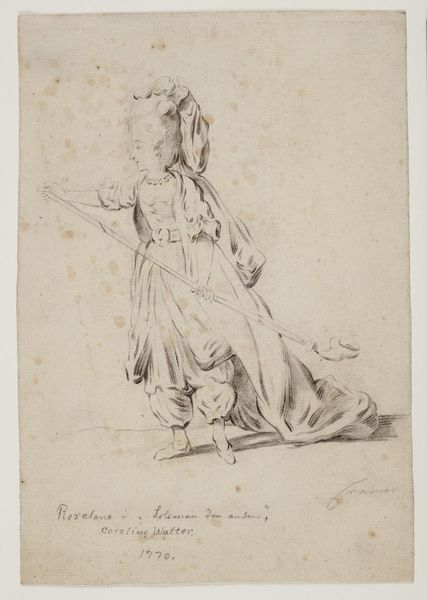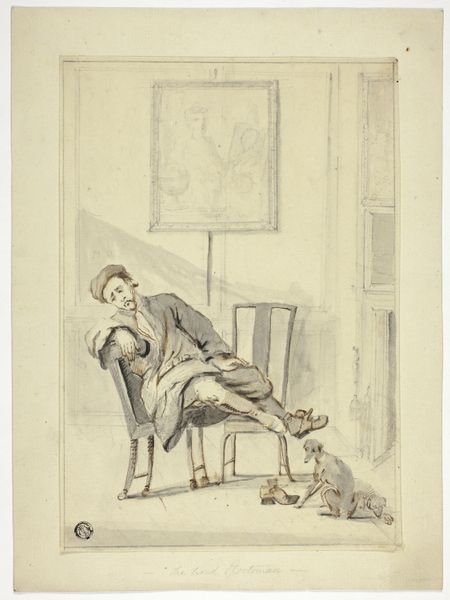
Dimensions: height 140 mm, width 116 mm
Copyright: Rijks Museum: Open Domain
This is Christian Bernhard Rode’s Allegory of Evil, made around 1725 with pen and brown ink. Here, a woman in classical garb holds a mask to her face, while a fox lurks at her side. The mask conceals, and the fox deceives; both symbols long associated with the darker aspects of human nature. Consider the mask: In ancient Greek theatre, masks amplified emotions, but here, it hides them, suggesting duplicity. We see this motif echoed through time. Think of commedia dell'arte, where masks denote stock characters, or even modern day political cartoons, where a mask can symbolize hypocrisy. The fox is a common motif in Aesop's fables, often representing cunning and trickery. The emotional power of these symbols lies in their ability to tap into our collective fears and anxieties about deception. Rode's work reminds us that evil often wears a disguise, lurking beneath the surface of normalcy. Just as the fox has been reimagined across cultures, the mask has resurfaced, evolved, and taken on new meanings, yet its core association with hidden intent remains.
Comments
No comments
Be the first to comment and join the conversation on the ultimate creative platform.
